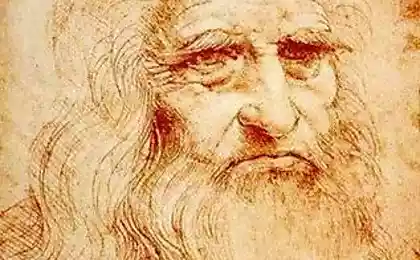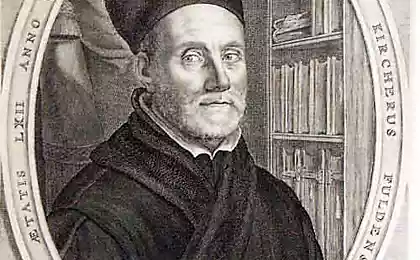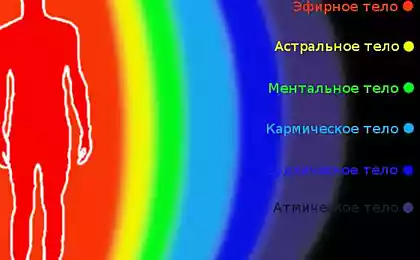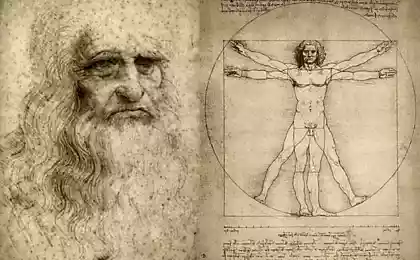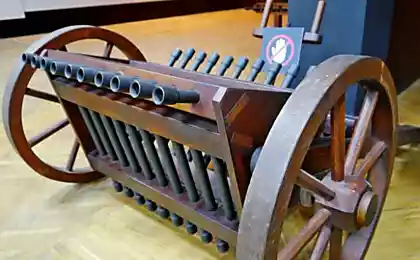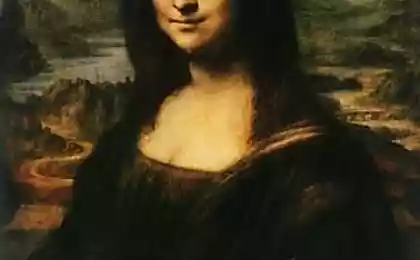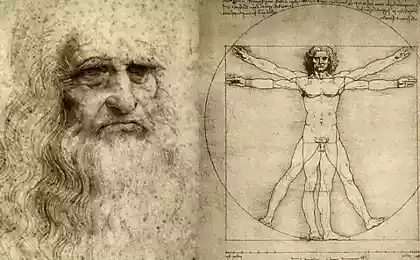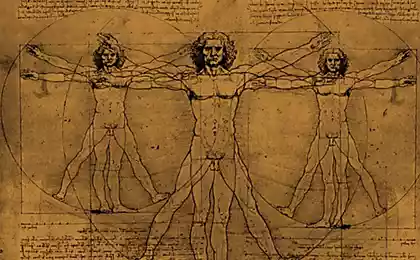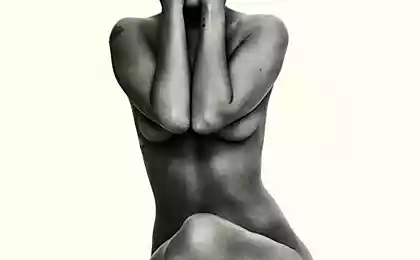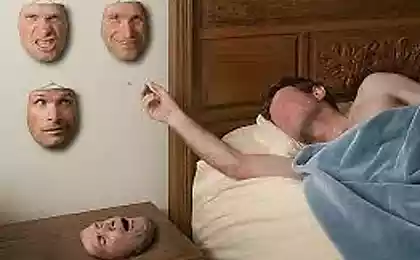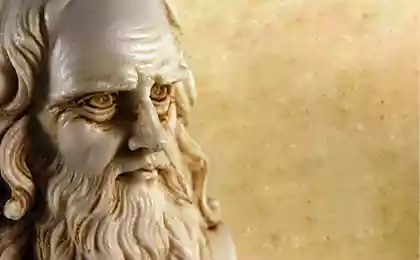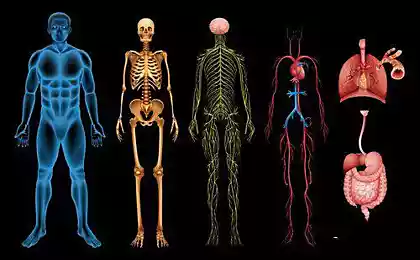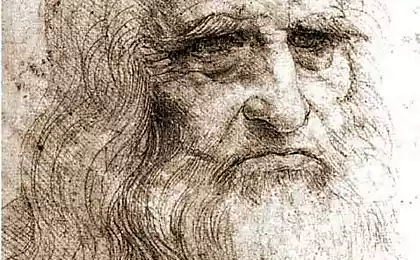498
Awesome about the proportions of the human body
Vitruvian man — a drawing made by Leonardo Da Vinci around 1490-92 years, as an illustration for a book devoted to the writings of Vitruvius. The drawing is accompanied by explanatory inscriptions, in one of his journals. it depicts a Nude male figure in two overlaid positions: with extended arms describing the circle and the square.
The drawing and text are sometimes called the canonical proportions. In the study of the figure you can see that the combination of hands and feet in reality is four different poses.
Posture with extended arms and not divorced feet within a square ("Square of the Ancient").
On the other hand, the pose with arms to the sides with hands and feet, fits into the circle. And, although, when changing poses, it seems that the center of the figure moves, in fact, the navel of the figure, which is its true center, remains stationary.
Later the same technique Corbusier made his scale of proporcionaria that influenced the aesthetics of architecture of the XX century.
The text in the picture:
"Vetruvio architetto mette nelle sue'opera d'architettura che le misure Dell omo..."
"Architect Vitruve laid in the architecture dimension of the human being..."
The following is a description of the relationships between various parts of the human body. In the accompanying records of Leonardo da Vinci pointed out that the drawing was created for the study of the proportions of the (male) human body as described in the treatises of the ancient Roman architect Vitruvius (Vitruvius), who wrote the following about the human body:
Length of four fingers equal to the length of the palm, the palm is equal to four foot, six palms make one cubit, four cubits a man's height.
Four cubits are equal step, and twenty four palms equal to the height of a man.
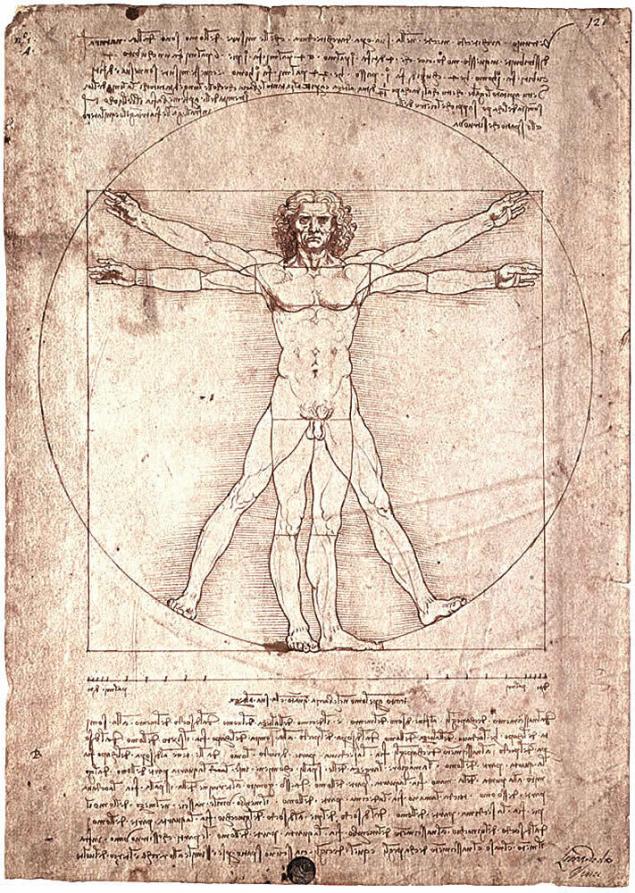
If you put the legs so that the distance between them was equal to 1/14 of human growth, and raise your hands so that the middle finger was at the top of the head, the Central point of the body, equidistant from all the extremities, your navel.
The space between the spaced legs and the floor forms an equilateral triangle.
Length of outstretched arms is equal to growth.
Distance from root of hair to tip of chin is one tenth of the human growth.
Distance from tip of chin to the nose and from the roots of the hair to the eyebrows is the same, and, like ear length, equal to 1/3 of the face.
The distance from the top of the chest to the top of the head is 1/6 of growth.
Distance from upper chest to the roots of the hair is 1/7.
Distance from nipples to the top of the head is exactly a quarter of the growth.
The greatest width of the shoulders — eighth of the growth.
The distance from the elbow to the fingertips — 1/5 of the growth, from the elbow to the axillary fossa — 1/8.
The entire length of the hand is 1/10 of growth.
The beginning of the genitals is right in the middle of the body.
Stop — 1/7 of growth.
Distance from toe of feet to the patella equal to the quarter length and the distance from the kneecap to the beginning of the genitals is also equal to one quarter of the growth. published
Source: www.abc-people.com/data/leonardov/018pic.htm
The drawing and text are sometimes called the canonical proportions. In the study of the figure you can see that the combination of hands and feet in reality is four different poses.
Posture with extended arms and not divorced feet within a square ("Square of the Ancient").
On the other hand, the pose with arms to the sides with hands and feet, fits into the circle. And, although, when changing poses, it seems that the center of the figure moves, in fact, the navel of the figure, which is its true center, remains stationary.
Later the same technique Corbusier made his scale of proporcionaria that influenced the aesthetics of architecture of the XX century.
The text in the picture:
"Vetruvio architetto mette nelle sue'opera d'architettura che le misure Dell omo..."
"Architect Vitruve laid in the architecture dimension of the human being..."
The following is a description of the relationships between various parts of the human body. In the accompanying records of Leonardo da Vinci pointed out that the drawing was created for the study of the proportions of the (male) human body as described in the treatises of the ancient Roman architect Vitruvius (Vitruvius), who wrote the following about the human body:
Length of four fingers equal to the length of the palm, the palm is equal to four foot, six palms make one cubit, four cubits a man's height.
Four cubits are equal step, and twenty four palms equal to the height of a man.

If you put the legs so that the distance between them was equal to 1/14 of human growth, and raise your hands so that the middle finger was at the top of the head, the Central point of the body, equidistant from all the extremities, your navel.
The space between the spaced legs and the floor forms an equilateral triangle.
Length of outstretched arms is equal to growth.
Distance from root of hair to tip of chin is one tenth of the human growth.
Distance from tip of chin to the nose and from the roots of the hair to the eyebrows is the same, and, like ear length, equal to 1/3 of the face.
The distance from the top of the chest to the top of the head is 1/6 of growth.
Distance from upper chest to the roots of the hair is 1/7.
Distance from nipples to the top of the head is exactly a quarter of the growth.
The greatest width of the shoulders — eighth of the growth.
The distance from the elbow to the fingertips — 1/5 of the growth, from the elbow to the axillary fossa — 1/8.
The entire length of the hand is 1/10 of growth.
The beginning of the genitals is right in the middle of the body.
Stop — 1/7 of growth.
Distance from toe of feet to the patella equal to the quarter length and the distance from the kneecap to the beginning of the genitals is also equal to one quarter of the growth. published
Source: www.abc-people.com/data/leonardov/018pic.htm
